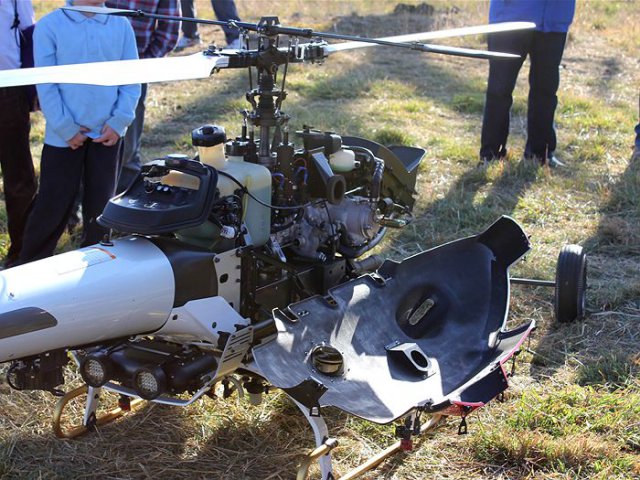 The need to access weeds in dangerous or remote areas with spraying rigs may soon be a thing of the past.
The need to access weeds in dangerous or remote areas with spraying rigs may soon be a thing of the past.
In an Australian first, farmers, miners and other land managers in the central west were treated to a demonstration of how unmanned helicopters can be used for weed management.
Mike Johnson from Yamaha says the technology was developed in 1983 in Japan at the request of the Japanese government. “They were concerned about the fatalities and accident rates of full size helicopters when spraying rice paddies”, he says.
Mr Johnson says other future agricultural uses of unmanned helicopters including seeding, remote sensing, precision agriculture and variable rate dispersal. He says it has the advantage of zero soil compaction and with no overlap it will maximise the use of productive land.
The helicopters are equipped with a high performance global positioning system, have a visual range of up to 400 metres and are controlled by a hand held unit. The control panel constantly monitors the helicopter and enables it to perform a self check to prevent trouble and notify the operator of any defects.
Anthony Dunhill, a farmer from Mandurama, says he can see the unmanned helicopters’ potential for weed management in difficult to access areas. “But at 120 thousand dollars per machine, it’s expensive; you would have to buy in partnership, or go contracting with it”, he says.
Mike Johnson say at this stage the primary markets for the technology is local government, catchment management authorities and anyone who manages land. “There is a strong business case for the technology”, he says. “One local council has trailed the technology in weed management and with the cost and shortage of labour in some areas it makes good business sense”.
The demonstration also attracted the mining industry representatives.
Gustave Nokia a senior exploration geologist from Newcrest Mining says he sees potential for, “remote identification of mineralisation or areas with potential mineralisation” using the unmanned helicopters. He says the primary constraint of the technology would be, “the current payload capacity; the equipment it would need it to carry for our purpose is too heavy”. The unmanned helicopter current load capacity is 28 kilograms.
Mike Johnson says the machine is easy to fly, but purchasing companies and operators need training and accreditation through CASA. The unmanned chopper is around three and a half meters long, one meter high and runs on standard unleaded fuel.
Farmer Anthony Dunhill says he would be happy to have this machine in his Christmas stocking!
Source: ABC Rural
